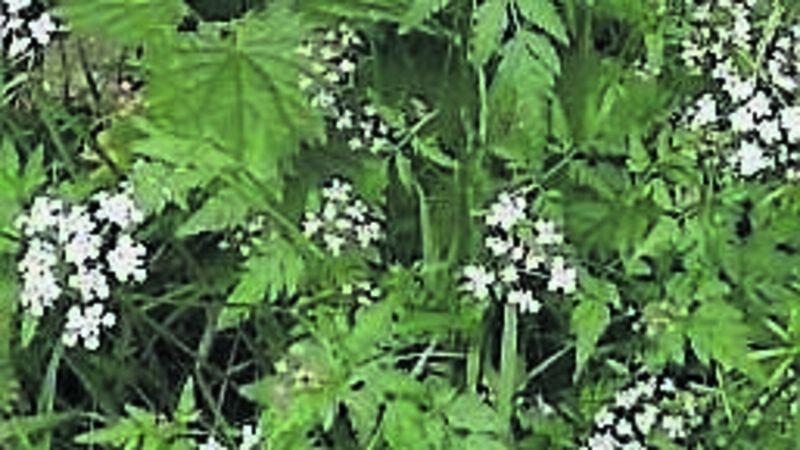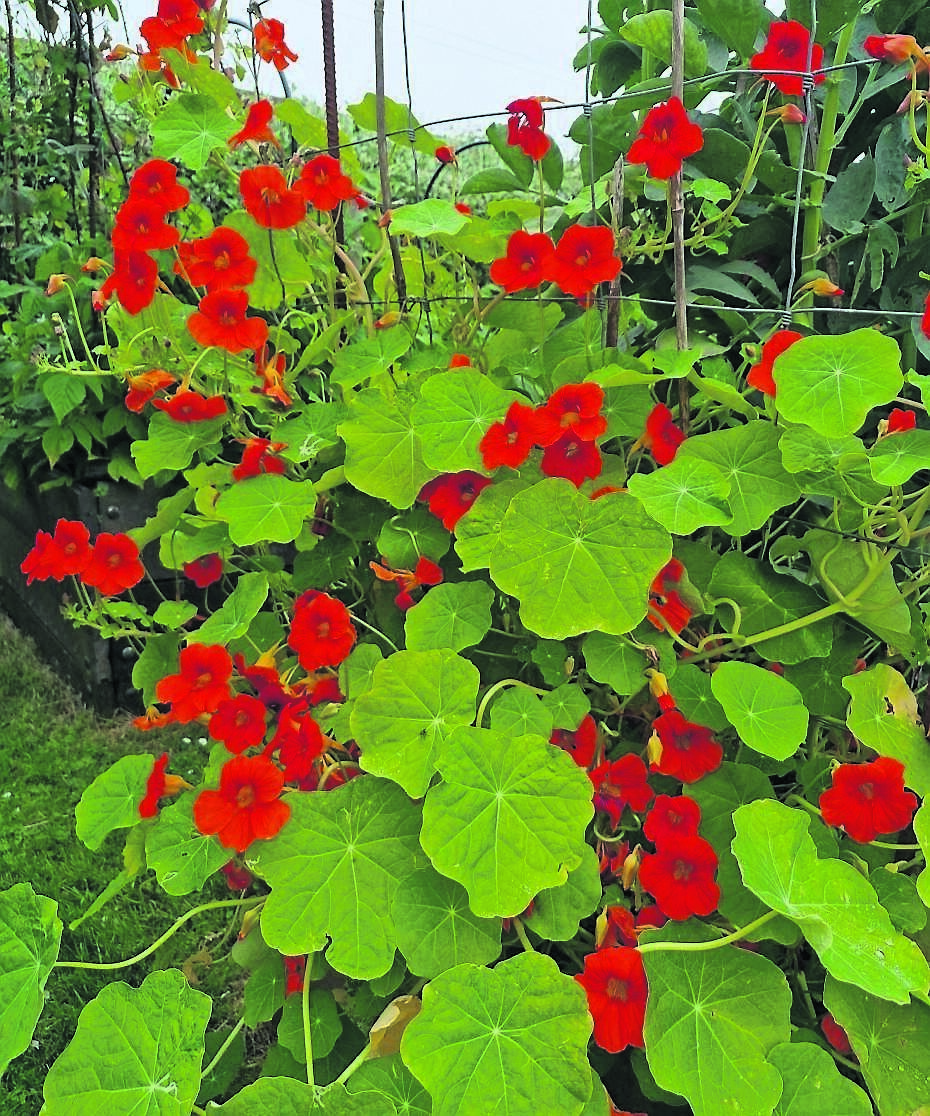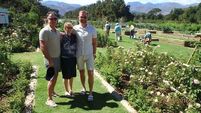What to do in your garden this August

Upright hedge parsley flowers from July to September - see Plant of the Week
As August arrives, the swallows are dive bombing their way in and out of sheds as they hone their flying skills.
They arrived late this spring and there is a knock on effect of their young being a bit later leaving the nest.
There is also a notable lack of butterflies in the garden this year, most likely down to the slow spring, and cooler, night-time summer temperatures.
Pollinators of all descriptions have had a turbulent summer season this year, with pollen and nectar not as reliably available as other years.
Factors like this make planting native trees, shrubs and wildflowers, and considering the garden for pollinators and other insects, all the more pressing for the future.
There is a deepening of hues in the herbaceous borders, with the hotter reds, oranges and yellows making their presence felt as the weeks roll on.
This is the month when asters, rudbeckia, helenium, dahlias and crocosmia all begin to take over the colour party and add some heat to the picture.
Observing the herbaceous border on a sunny summer’s day is mesmerising, with the blue pollen of the rose bay willow herb and the orange pollen of the Verbascum chaixii loaded into the pollen baskets on their rear legs.
Deadheading is important to keep the flowers coming for as long as possible.

Herbaceous geraniums like Geranium ‘Rozanne’ have the attribute of sterility, which is good news for continued flowering right through the summer months, with no deadheading necessary.
They still produce pollen and nectar for pollinators, but no seed is produced and so it is bad news for self-seeding.
The garden is starting to get a little tired looking and the occasional drop of rain is a welcome occurrence as it freshens a season that is starting a slow wind down.
This time of the year is one of the most rewarding, with lots in flower and produce to harvest a- plenty. Some early flowering plants are beginning to set seed and a dry and sunny day is a good time to consider collecting some of your own seed for sowing next spring.
Collecting seed from calendula, tagetes, poached egg plant, cosmos and nasturtium will provide your own seed for a colourful supply of companion plants in the vegetable garden next year, so why not try it this year? It may be the beginning of something beautiful.
Most of these plants will readily seed themselves in situ anyhow, once weeding regimes are not too rigorous.
I have found gravel areas adjacent to beds and borders to be great trial in self seeding-beds, which results in beds doubling in width with no digging undertaken!
Self-seeders are great, particularly if you are going for a wilder effect - foxgloves, honesty, cow parsley, campanula, aquilegia, alchemilla, evening primrose, fennel, upright hedge parsley and borage. The list is endless, but these are some of the plants that I hesitate before I pull!
This can make maneuvering through paths at this stage of the growing season quite difficult, so a bit of balance is required when leaving seedlings in place.
This is also a good reason to collect seed and sow it where there is room for it to grow!
It is time now to consider sowing some crops that can be harvested over the winter months. They need to be sown now in order to put on growth and become established before conditions for growth become less favourable.
Some crops to consider include spring cabbage, spinach, winter lettuces, beetroot, chard, kale, and purple sprouting broccoli.
The active compost heap should be working at full steam now, with vegetation breaking down quickly as microbes get to work.
Having a mixture of green or nitrogen-rich material like grass clippings, hedge cuttings and weeds, in addition to carbon-rich brown materials, is key to rapidly making good, usable compost.
Also, being too dry can be a limiting factor that slows the breakdown process, as does being too wet.
A good watering will resolve the former and the latter can be addressed by turning the compost heap and adding layers of carbon rich material like cardboard, newspaper or dead leaves to help balance the carbon nitrogen ratio.

If a heap is predominantly grass clippings, for example, then it will become slimy, smelly and unattractive for future use in the garden. Mixing through some brown material such as cardboard or autumn leaves will make a huge difference, allowing aeration and the breakdown of material, and will result in usable compost.
Plant of the Week
Upright hedge parsley has come to my attention seeding itself in gravel areas more readily this year. I had always encouraged its presence, mistaking it for cow parsley, which is a much stronger growing plant with similar umbel flowers.
Torilis japonica is a native Irish wildflower most commonly found on woodland edges in shadier conditions. It prefers a light, well-drained soil, explaining why it is so at home in gravel areas, and gets to about a metre tall and 50cm spread.
Flowering from July into September, it has delicate ferny foliage and a lovely airy presence with delicate white umbel flowers which fade to pink.
It has been used in traditional medicine in the East for many years and is believed to have anti-fungal, anti-inflammatory and anti-tumor properties.
Its leaves and stems are edible and can be used in salads but, as with all foraged plants, take great care to ensure correct identification before use.







 App?
App?


